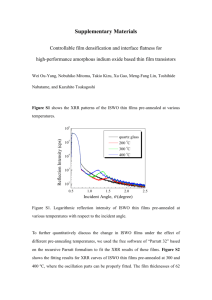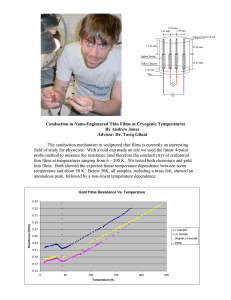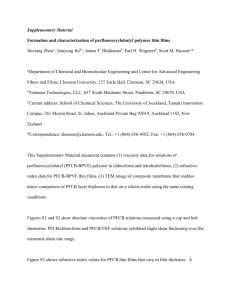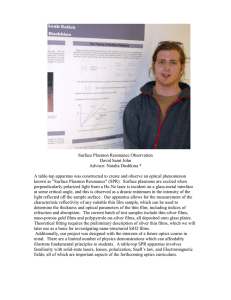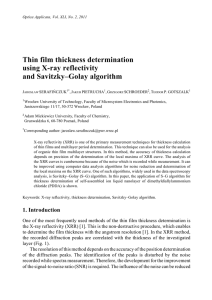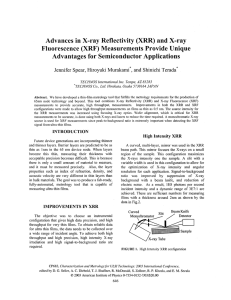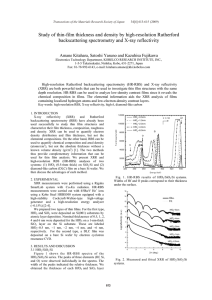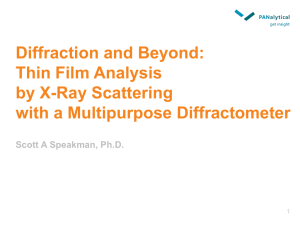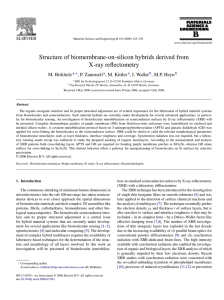T Thin film characterization with x-ray reflectivity (XRR
advertisement
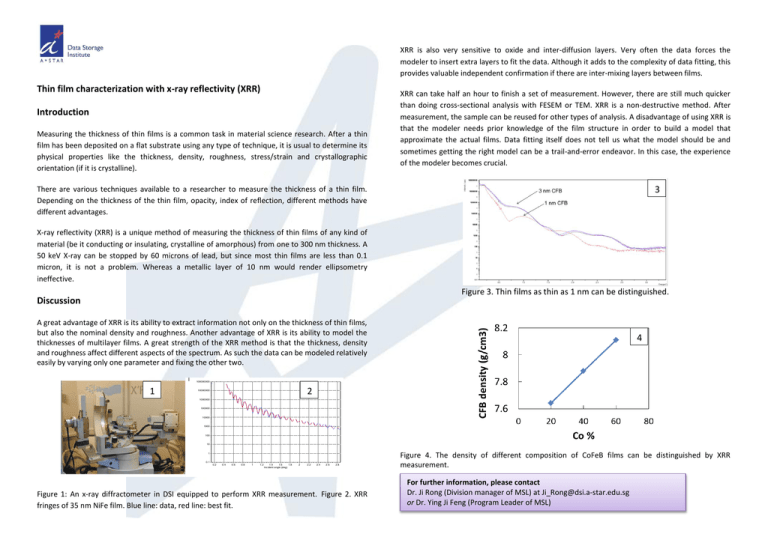
XRR is also very sensitive to oxide and inter-diffusion layers. Very often the data forces the modeler to insert extra layers to fit the data. Although it adds to the complexity of data fitting, this provides valuable independent confirmation if there are inter-mixing layers between films. T Thin film characterization with x-ray reflectivity (XRR) Introduction Measuring the thickness of thin films is a common task in material science research. After a thin film has been deposited on a flat substrate using any type of technique, it is usual to determine its physical properties like the thickness, density, roughness, stress/strain and crystallographic orientation (if it is crystalline). XRR can take half an hour to finish a set of measurement. However, there are still much quicker than doing cross-sectional analysis with FESEM or TEM. XRR is a non-destructive method. After measurement, the sample can be reused for other types of analysis. A disadvantage of using XRR is that the modeler needs prior knowledge of the film structure in order to build a model that approximate the actual films. Data fitting itself does not tell us what the model should be and sometimes getting the right model can be a trail-and-error endeavor. In this case, the experience of the modeler becomes crucial. 3 There are various techniques available to a researcher to measure the thickness of a thin film. Depending on the thickness of the thin film, opacity, index of reflection, different methods have different advantages. X-ray reflectivity (XRR) is a unique method of measuring the thickness of thin films of any kind of material (be it conducting or insulating, crystalline of amorphous) from one to 300 nm thickness. A 50 keV X-ray can be stopped by 60 microns of lead, but since most thin films are less than 0.1 micron, it is not a problem. Whereas a metallic layer of 10 nm would render ellipsometry ineffective. Figure 3. Thin films as thin as 1 nm can be distinguished. Discussion A great advantage of XRR is its ability to extract information not only on the thickness of thin films, but also the nominal density and roughness. Another advantage of XRR is its ability to model the thicknesses of multilayer films. A great strength of the XRR method is that the thickness, density and roughness affect different aspects of the spectrum. As such the data can be modeled relatively easily by varying only one parameter and fixing the other two. 4 100000000 1 2 10000000 1000000 Intensity (cps) 100000 10000 1000 100 10 1 0.1 0.2 0.4 0.6 0.8 1 1.2 1.4 1.6 1.8 Incident angle (deg) 2 2.2 2.4 2.6 2.8 Figure 1: An x-ray diffractometer in DSI equipped to perform XRR measurement. Figure 2. XRR fringes of 35 nm NiFe film. Blue line: data, red line: best fit. Figure 4. The density of different composition of CoFeB films can be distinguished by XRR measurement. For further information, please contact Dr. Ji Rong (Division manager of MSL) at Ji_Rong@dsi.a-star.edu.sg or Dr. Ying Ji Feng (Program Leader of MSL)

